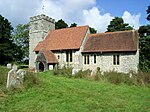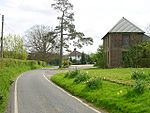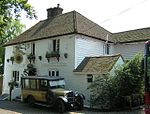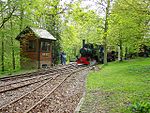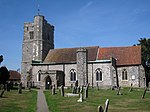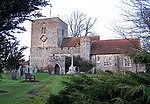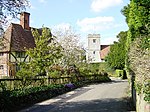St Giles Church, Wormshill
11th-century church buildings in EnglandChurch of England church buildings in KentDiocese of CanterburyPages with non-numeric formatnum arguments

St Giles Church is the sole church in the village of Wormshill in Kent. The church is Anglican and is dedicated to Saint Giles. It forms part of the united benefice of Tunstall with Bredgar. The other parishes are Milstead, Bicknor and Frinsted and Rodmersham. The ecclesiastical parish of Wormshill is in the Diocese of Canterbury and the Sittingbourne deanery (within the archdeaconry of Maidstone). It is a Grade II listed building, English Heritage number 1060971.
Excerpt from the Wikipedia article St Giles Church, Wormshill (License: CC BY-SA 3.0, Authors, Images).St Giles Church, Wormshill
The Street,
Geographical coordinates (GPS) Address Nearby Places Show on map
Geographical coordinates (GPS)
| Latitude | Longitude |
|---|---|
| N 51.285 ° | E 0.6971 ° |
Address
The Street
ME9 0TT , Wormshill
England, United Kingdom
Open on Google Maps
